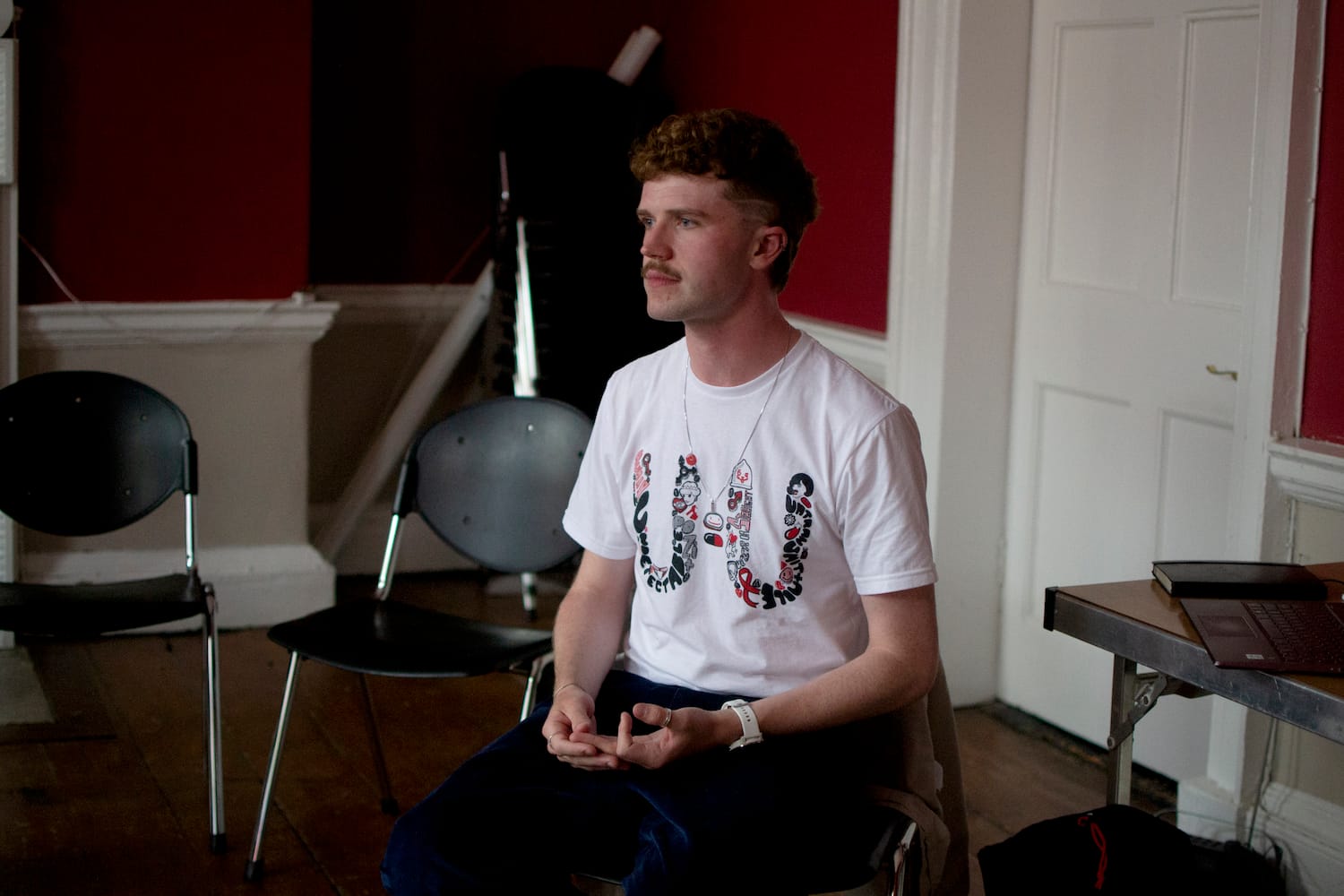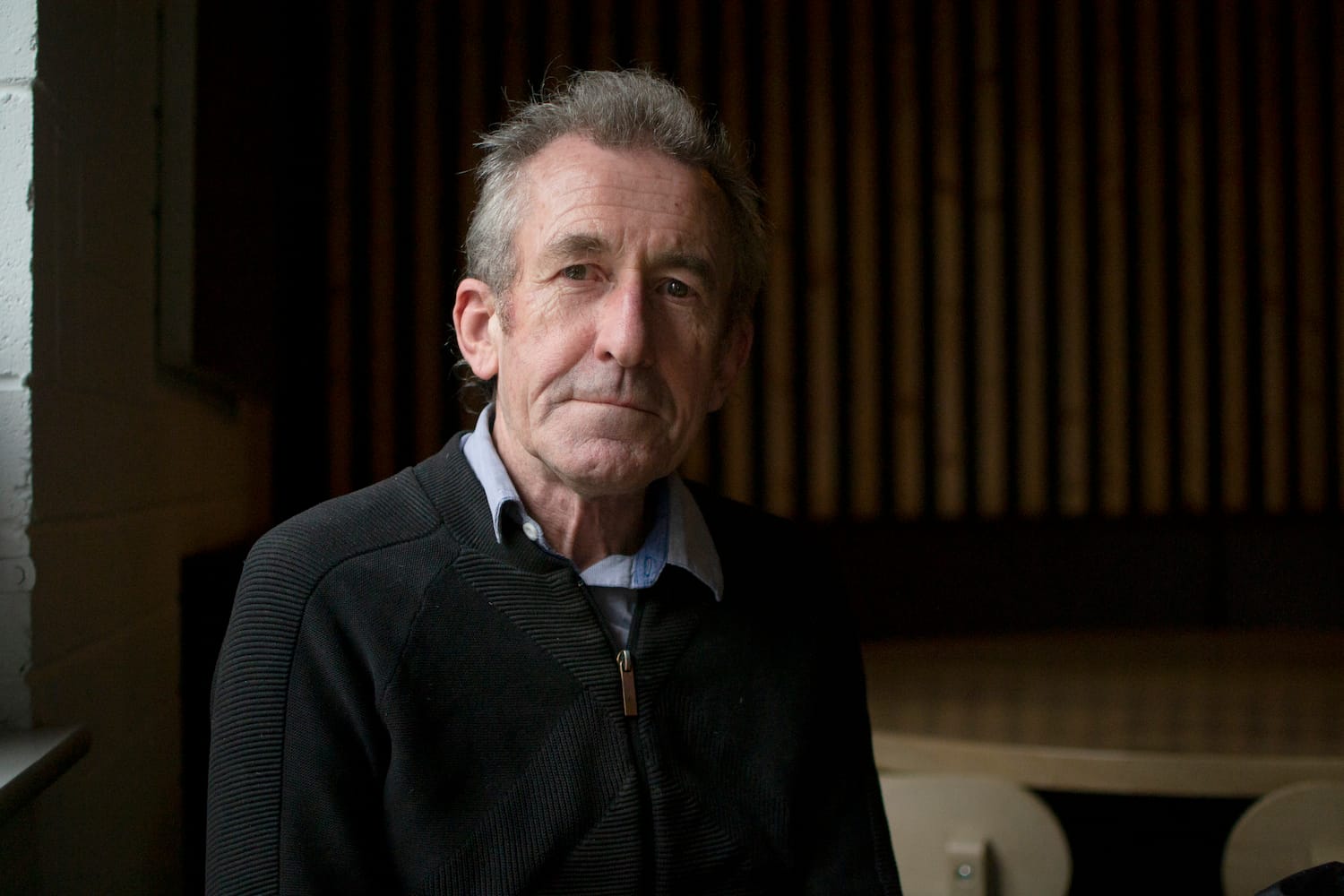Long-time campaigners bristle at politicians' back-patting over new lift at Clongriffin Dart Station
“They were actually trying to take credit for the extremely hard work that we have put in."
They’ve heard about – and witnessed – violent attacks on queer people and feel the Gardaí aren’t doing enough, members of the newly formed group say.

On a recent Tuesday afternoon, Dr Stephen Hatton waited nervously in a large room with red walls and a high ceiling on the first floor of Outhouse, the queer community centre on Capel Street.
A rainbow flag hung on one side of the room. A trans flag dangled above a shiny white fireplace mantel on the other side.
Hatton had set up several black metal chairs in a loop, and taken up one seat closest to a table with his phone and laptop, ready for the first meeting of a new queer protection group in the city.
Hatton, a medical doctor and two of his friends, had hastily launched the group on 8 June.
They had been angered, he says, by an account of an assault on a non-binary queer person on Dame Street, as reported by GCN.
The outlet later pulled the story and walked back from its initial account, in a statement. But still, Hatton says, other stories have been verified.
“There was the outrageous and disgusting murders of Aidan Moffitt and Michael Snee in Sligo that shook all of us to our core and made us question our sense of safety,” he said, a black notebook sitting on his lap.
The meeting kicked off a little past 6pm.
Four joined Hattan at first, then five when a smiling Hugh Murphy joined, the chats already in full swing.
They agreed to go live on Instagram to keep more people in the loop. Eighteen people tuned in. A few people in the room snapped their fingers when they, not infrequently, agreed with something.
Hatton propped the camera to point towards where Alex Handsome was sitting, pen and a large notepad in hand. He asks them if they’re okay with that.
“Do I look good?” asks Handsome, posing for the camera.
Hatton explained what he envisioned the group to be. “Promote peace, promote tolerance, deter queerphobia by being present,” he said.
They were to be a circle of volunteers in high-vis pink vests looking after queer people on the streets of the city who were experiencing violence, harassment or just simple inconveniences, said Hatton.
If needed, volunteers could provide first-aid to injured people, which Hatton could provide training for, he says.
Saturn WölfflöW, a transgender woman in a long flowery dress, said they could do as little as walking people to buses, taxis, or front doors if they live nearby.
People often hassle her, said WölfflöW, so she knows the importance of feeling protected and seen by somebody with shared experiences.
“The amount of shit I’d get just walking to the front door is crazy,” she says.
WölfflöW points to her dress. She fears wearing it because that can undercut her safety walking home, something she doesn’t have to worry about whenever she hides her gender identity, she says.

Everyone nods. Hatton said that their simple presence on the ground could communicate a message of camaraderie.
“The first goal, that is maybe the lowest hanging fruit, and by no means easily reached, is a message of reassurance to our community that something’s being done,” said Hatton.
What happens if they try to give someone first-aid and end up making things worse? says Handsome. “Am I liable? I don’t have any certification in first-aid training.”
Hatton said the Good Samaritan law covers people who have little training but try to help in good faith.
“And the outcome is not going to be your responsibility as long as it’s clear you acted in good faith,” says Hatton.
They would likely be targeted and victim to queerphobic abuse on the city’s streets themselves, he says, but volunteers would get basic conflict-resolution training to help cool down encounters.
“We’re not going to be aggressors, we’re not going to be agitators,” said Hatton.
When Hatton first announced the group on social media, it was named Pink Panthers Ireland. There was a bit of backlash.
Some people thought of the Black Panther Party for Self-Defense – an armed Black resistance movement founded in the United States in the 1960s– and saw it as cultural appropriation and disrespectful to its legacy, he says.
But that’s not what he had in mind, Hatton says.
It was meant as a homage to the Pink Panthers of 1980s Manhattan, he says. “Who were similarly responding to increasing queerphobic violence and took to patrolling the streets themselves in a kind of grassroots movement.”
But he knows that the New York queer liberation group’s name was a tribute to Black Panthers, says Hatton, who. admires Huey P. Newton, who helped found the movement.
Hatton had come across Newton’sletter to the women and gay liberation movements. Its kind acknowledgement of queer pain was touching, he says.
“I know through reading, and through my life experience, my observations, that homosexuals are not given freedom and liberty by anyone in the society. Maybe they might be the most oppressed people in the society,” says Newton’sletter.
“I learned how he had called for a solidarity between causes,” said Hatton at the meeting.
But they should pick another name, one that wasn’t so divisive, he said.
WölfflöW suggested Pink Foxes. “Foxes are the best thing about Dublin,” she said.
Hatton nodded and smiled. It stuck.
One idea behind the creation of Pink Foxes is that the guards aren’t doing enough to combat queerphobic attacks.
Clayton Rooney said he’d turned up at themeeting because he’d witnessed a violent attack on a transgender friend on the streets and it had angered him.
His friend didn’t see it as transphobic, just a regular altercation, said Rooney.
But he can’t stop wondering if things would have played out differently if she weren’t a trans woman. “If it was a male-presenting person, would it escalate to that moment?” says Rooney.
Rooney and others said the guards don’t record the gender identity and sexual orientation of assault victims, so they don’t know the scope or trends of violence.
Said Hatton: “I think the only way we know if queer people are disproportionally affected by violence is if every incident of violence against a queer person, whether it’s queerphobic or not, is recorded as violence against a queer person.”
Although Gardaí do not record the gender identity and sexual orientation of all assault victims, they say they do record when they think something was a hate crime.
In such cases, a spokesperson for the Gardaí said they record “the relevant discriminatory motive (and sub motive) targeted by an offender”.
“Discriminatory Motives include Anti-Sexual Orientation (Sub Motives of Bisexual, Gay, Heterosexual, Lesbian, Other) and Anti-Gender (Sub Motives include Male & Female, Intersex, Transgender and Other),” they said.
Vicky Conway, an associate professor in law at Dublin City University, says it’s not just about hate crime. Albeit Gardaí’s effort to record those offences in the absence of hate crime laws is admirable, she said.
“It’s also about knowing how are police using their powers in things like stop-and-searches, arrests and things like that,” said Conway.
Besides, she says, attacks on queer people are not always hate-motivated, but it’s good to keep track of how much they are generally victimised.
Homophobic attacks, she said, are recorded thematically as one narrates the story of what happened and so there’s no box to tick a gender identity or sexual orientation, making them difficult to analyse.
It’s important to ensure the safety of people’s information if gender identity and sexual status were to be recorded, she said.
“So that, you know the confidence isn’t lost or undermined, and obviously the data protection commissioner has a role here, the Garda Ombudsman has a role here,” said Conway.
Hatton faced more backlash when he posted from the group’s account that the force should engage more with them.
“Where is the engagement with the Queer community? A rainbow patrol car is tacky tokenism if queers are being beaten & murdered,”says a tweet from the group, under its old name.
At the meeting, Hatton stressed that the group wasn’t aligned or partnering with Gardaí at all. “I will not tolerate that as an option,” said Hatton, shaking his hands.
He said the only interaction they would have with the guards would likely happen if they’re at an incident and Gardaí arrive too.

Distrust in the Gardaí among queer people dates way back, says Kieran Rose, who helped found the Gay and Lesbian Equality Network (GLEN) back in the 1980s.
He points to the murder of RTÉ’s set designer Charles Self in 1982. Gardaí failed to find Self’s murderer and the case remains unresolved.
The investigation into Self’s killing quickly turned into a witch hunt of gay men at a time when queerness was a crime, says Rose.
“About 1,500 people were questioned and photographed and fingerprinted,” said Rose recently, sitting at the café inside Teeling Distillery.
Guards terrorised gay men at the time, he says. “They called people’s workplace and they called to people’s homes and stuff like that,” said Rose, who has contemporary newspaper clippings.
“Gays complain harassement as Gardaí seek Self’s killer,” reads one headline.
Some are too young to remember all that though, says Rose, but the guards have let down younger queers too.
He mentions the Guards’ recent sting operation which led to the arrest of gay men having sex at a city’s Marks and Spencer public toilets.
“Which was outrageous, that was dreadful. It was so heavy-handed,” says Rose.
He notes how one of the men’s Brazilian nationality was spotlighted in the news and the potential impact of the case on their immigration status and right to stay.
The guards could’ve tried other ways to discourage people from having sex in the toilets, says Rose.
Rose says he can’t remember any past queer street protection group in Ireland, but initiatives like that can often boost morale, and that’s good.
“Community action is always, well, mostly, 99 percent of the time, is great,” said Rose.
At their meeting on that recent Tuesday, the Pink Foxes decided to hold a training session in late June and make their debut on city streets by Friday 1 July.
Turnout for training might be low though, said Hatton. Handsome said that it didn’t matter as long as someone showed.
“Three people showing up is still three people showing up,” said Handsome. All the Pink Foxes agreed that they were going to make it.